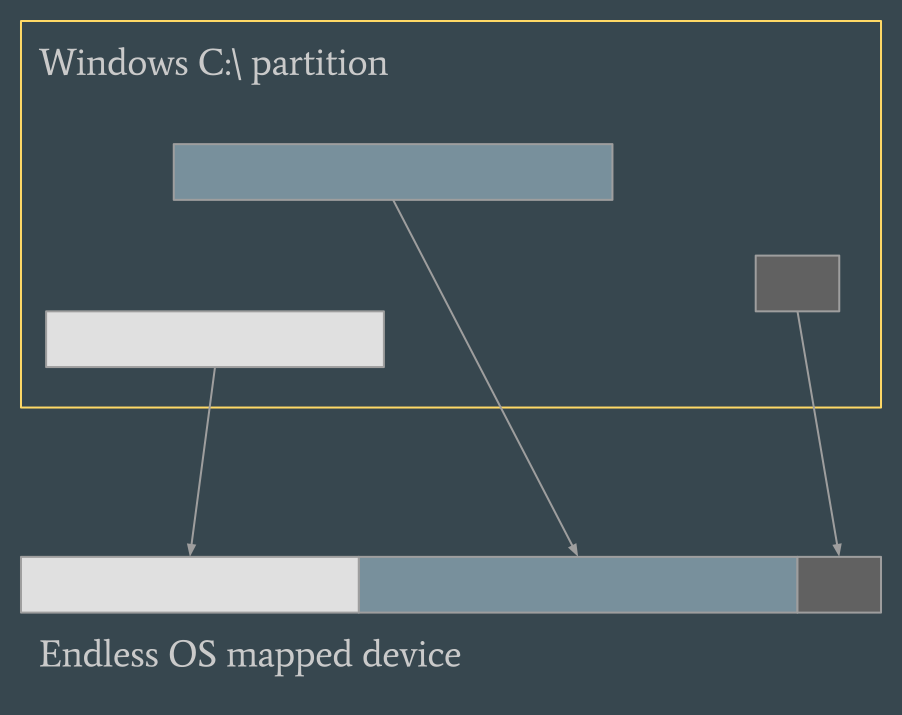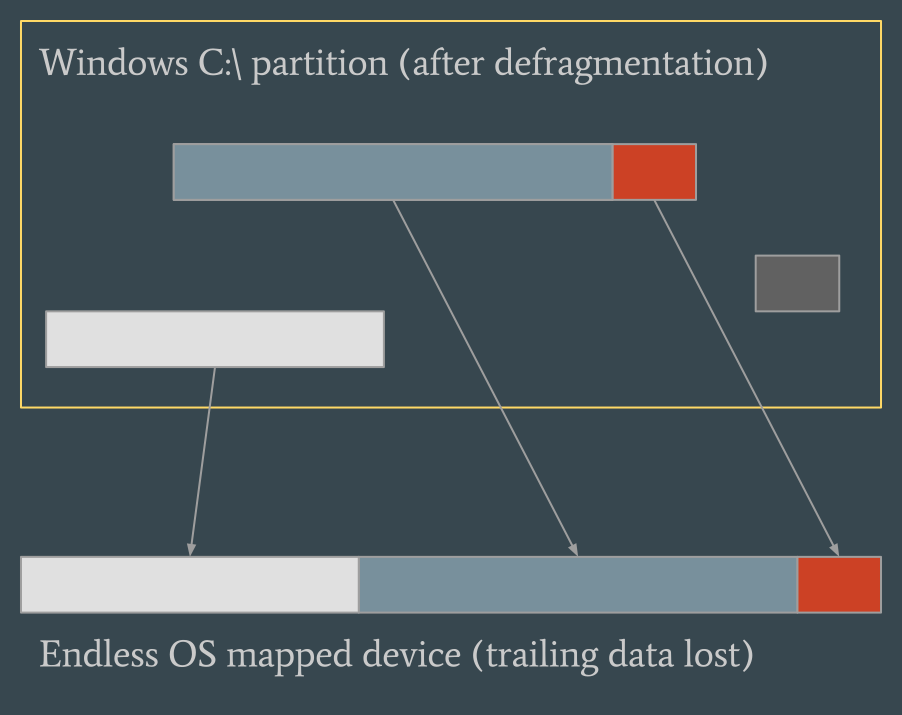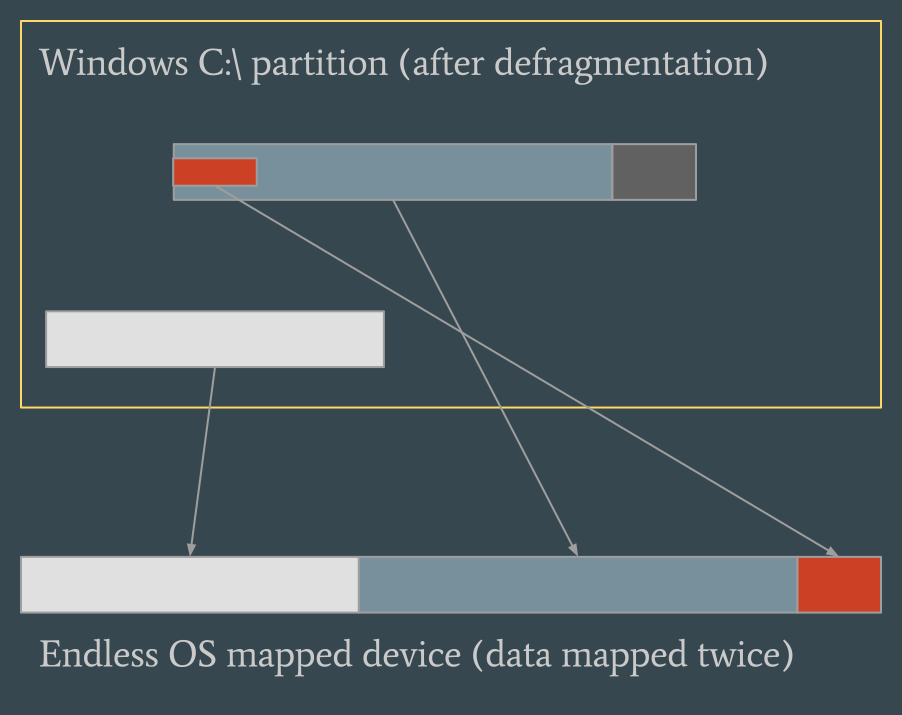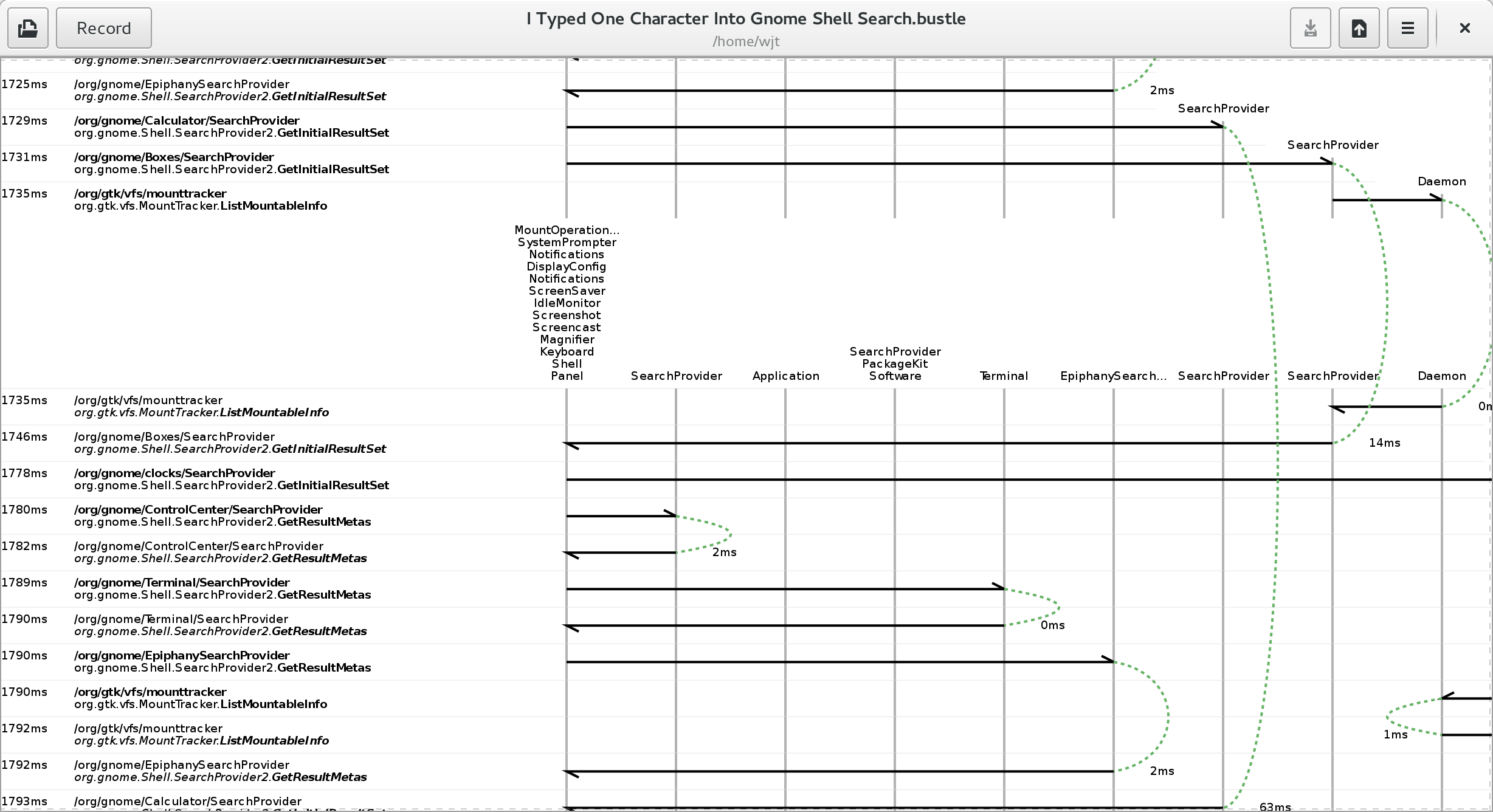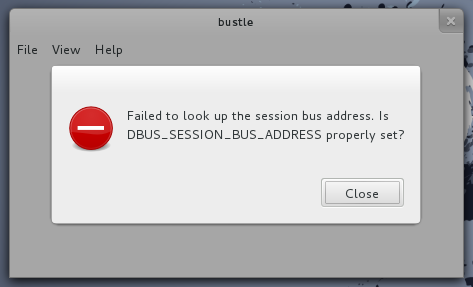Back in July, I wrote about trying to get Endless OS working on DVDs. To recap: we have published live ISO images of Endless OS for a while, but until recently if you burned one to a DVD and tried to boot it, you’d get the Endless boot-splash, a lot of noise from the DVD drive, and not much else. Definitely no functioning desktop or installer!
I’m happy to say that Endless OS 3.3 boots from a DVD. The problems basically boiled down to long seek times, which are made worse by data not being arranged in any particular order on the disk. Fixing this had the somewhat unexpected benefit of improving boot performance on fixed disks, too. For the gory details, read on!
The initial problem that caused the boot process to hang was that the D-Bus system bus took over a minute to start. Most D-Bus clients assume that any method call will get a reply within 25 seconds, and fail particularly badly if method calls to the bus itself time out. In particular, systemd calls a number of methods on the system bus right after it launches it; if these calls fail, D-Bus service activation will not work. iotop and systemd-analyze plot strongly suggested that dbus-daemon was competing for IO with systemd-udevd, modprobe incantations, etc. Booting other distros’ ISOs, I noticed local-fs.target had a (transitive) dependency on systemd-udev-settle.service, which as the name suggests waits for udev to settle down. ((Fedora’s is via dmraid-activation.service, which may or may not be deliberate; anecdotally, SUSE DVDs deliberately add a dependency for this reason.)) This gets most hardware discovery out of the way before D-Bus and friends get started; doing the same in our ISOs means D-Bus starts relatively quickly and the boot process can continue.
Even with this change, and many smaller changes to remove obviously-unnecessary work from the boot sequence, DVDs took unacceptably long to reach the first-boot experience. This is essentially due to reading lots of small files which are scattered all over the disk: the laser has to be physically repositioned whenever you need to seek to a different part of the DVD, which is extremely slow. For example, initialising IBus involves running ibus-engine-m17n --xml which reads hundreds of tiny files. They’re all in the same directory, but are not necessarily physically close to one another on the disk. On an otherwise idle system with caches flushed, running this command from an loopback-mounted ISO file on an SSD took 0.82 seconds, which we can assume is basically all squashfs decompression overhead. From a DVD, this command took 40 seconds!
What to do? Our systemd is patched to resurrect systemd-readahead (which was removed upstream some time ago) because many of our target systems have spinning disks, and readahead improves boot performance substantially on those systems. It records which files are accessed during the boot sequence to a pack file; early in the next boot, the pack file is replayed using posix_fadvise(..., POSIX_FADV_WILLNEED); to instruct the kernel that these files will be accessed soon, allowing them to be fetched eagerly, in an order matching the on-disk layout. We include a pack file collected from a representative system in our OS images to have something to work from during the first boot.
This means we already have a list of all ((or at least the majority of)) files which are accessed during the boot process, so we can arrange them contiguously on the disk. The main stumbling block is that our ISOs (like most distros’) contain an ext4 filesystem image, inside a GPT disk image, inside a squashfs filesystem image, and ext4 does not (to my knowledge!) provide a straightforward way to move certain files to a particular region of the disk. To work around this, we adapt a trick from Fedora’s livecd-tools, and create the ext4 image in two passes. First, we calculate the size of the files listed in the readahead pack file (it’s about 200MB), add a bit for filesystem overhead, create an ext4 image which is only just large enough to hold these files, and copy them in. Then we grow the filesystem image to its final size (around 10GB, uncompressed, for a DVD-sized image) and copy the rest of the filesystem contents. This ensures that the files used during boot are mostly contiguous, near the start of the disk. ((When I described this technique internally at Endless, Juan Pablo pointed out that DVDs can actually read data faster from the end (outside) of the disk. The outside of the disk has more data per rotation than the centre, and the disk spins at a constant rotation speed. A quick test with dd shows that my drive is twice as fast reading data from the end of the disk compared to the start. It’s harder to put the files at the end of the ext4 image, but we might be able to artificially fragment the squashfs image to put the first few hundred MBs of its contents at the end.))
Does this help? Running ibus-engine-m17n --xml on a DVD prepared this way takes 5.6 seconds, an order of magnitude better than the 40 seconds observed on an unordered DVD, and booting the DVD is more than a minute faster than before this change. Hooray!
Due to the way our image build and install process works, the GPT disk image inside the ISO is the same one that gets written to disk when you install Endless OS. So: how will this trick affect the installed system? One potential problem is that mke2fs uses the filesystem size to determine various attributes, like block and inode sizes, and 200MB is small enough to trigger the small profile. So we pass -T default to explicitly select more appropriate parameters for the final filesystem size. ((After Endless OS is installed, the filesystem is resized again to fill the free space on disk.)) As far as I can tell, the only impact on installed systems is positive: spinning disks also have high seek latency, and this change cuts 15% off the boot time on a Mission One. Of course, this will gradually decay when the OS is updated, since new files used at boot will not be contiguous, but it’s still nice to have. (In the back of my mind, I’ve always wondered why boot times always get worse across the lifetime of a device; this is the first time I’ve deliberately caused this to be the case.)
The upshot: from Endless OS 3.3 onwards, ISOs boot when written to DVD. However, almost all of our ISOs are larger than 4.7 GB! You can grab the Basic version, which does fit, from the Linux/Mac tab on our website and give it a try. I hope we’ll make more DVD-sized ISOs available in a future release. New installations of Endless OS 3.3 or newer should boot a bit more quickly on rotating hard disks, too. (Running the dual-boot installer for Windows from a DVD doesn’t work yet; for a workaround, copy all the files off the DVD and run them from the hard disk.)
Oh, and the latency simulation trick I described? Since it delays reads, not seeks, it is actually not a good enough simulation when the difference between the two matters, so I did end up burning dozens of DVD+Rs. Accurate simulation of optical drive performance would be a nice option in virtualisation software, if any Boxes or VirtualBox developers are reading!

